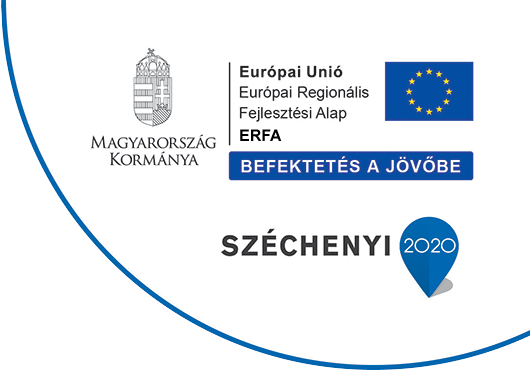Some 99% of the registered businesses in Hungary are small- and medium-sized. These companies are considered one of the main drivers of the domestic market, acting as suppliers to giant multinationals. What are the biggest challenges for Hungarian SMEs who want to become the next Magyar Multis? Hungarian Export Promotion Agency (HEPA) CEO Kristóf Szabó shares his view with the Budapest Business Journal.
Swedish researchers from Uppsala University had developed a sequential model to describe the steps followed by a small domestic company wanting to enter an international market. Companies typically start their expansion in a geographically nearby market. After gaining experience, they expand to more distant territories. Entry to a new market is usually through exports, followed by establishing a foreign sales subsidiary or foreign production.
According to recent international studies, two significant trends shape this model: the growing importance of networking technologies and the increasing cultural tolerance for foreign business practices, even in countries far away from the global mainstream.
In Hungary, some 99% of the registered enterprises SMEs, according to a study by the Central Statistical Office of Hungary (KSH). These firms employed nearly two-thirds of those working in the private business sector, contributing 43% of added value, 42% of net revenues, and 34% of investments of the total performance of firms operating in the country in 2018, according to KSH.
Yet even in this stage of globalization, Hungarian SMEs are regarded as mainly effective in their domestic market, acting merely as suppliers to multinationals.
“In many cases, Hungarian SMEs lack specific export ideas and strategy; thus, they do not have sufficient in-depth knowledge,” HEPA CEO Kristóf Szabó tells the Budapest Business Journal.
“Due to this, they often encounter unexpected obstacles and hidden cost factors in their export process. They are deterred from further attempts by their failure, although many successful businessmen have already pointed out that failure is only a step towards success,” Szabó notes.
Active Contact
“HEPA can provide SMEs with an array of services that can successfully prevent initial export barriers, such as insights to local rules and legal frameworks, advice on appropriate sales channels, as well as active contact with local customers,” he explains.
“Hungary’s export performance has exceeded EUR 100 billion since 2016, ranking Hungary as the 35th largest exporter in the world. In Hungary, the declaration of export sales is voluntary, making it is difficult to draw related statistics,” he says.
“According to estimates based on customs statements, the role of the SME sector in total Hungarian exports can be somewhere between 18-25%. The government aims to increase this rate by boosting the competitiveness and productivity of the Hungarian SME sector with various measures and initiatives,” Szabó adds.
He says three sectors are clearly identifiable among exporting SMEs: agriculture, health, and the environmental and water industries.
“When it comes to traditional products and services, there is a fundamental correlation between the size of the firm and the geographical distances it is willing to bridge. The larger a business, the more it is willing to sacrifice to enter distant markets, as with larger sales volumes it can cut its export unit costs more effectively,” Szabó explains to the BBJ.
Companies trading in niche markets with high demand are typically from the ICT sector and less likely to turn to HEPA for help. According to Szabó, there are various types of value chains for future Hungarian multinationals.
“Value chains in food trade are more open than those in the automotive and IT industries. Networking starts at international trade fairs,” he explains.
Investment Needs
“Hungarian companies must comply with strict international production and supply standards and regulations, which can lead to increased investment needs. In recent years, the Hungarian government has launched various initiatives to lift the added value of the SME sector, such as the ZalaZONE automotive industry test track in Zalaegerszeg (some 230 km northeast to Budapest) and the M76 test track-type expressway. The military industry is also a similarly emerging, high-volume sector with a stable added value.”
When it comes to potential export target markets, Szabó emphasized that Hungarian SMEs usually target bordering countries and the Balkan region.
According to HEPA, further dynamic growth opportunities are hidden in the territories of the former CIS countries, and there is still untapped potential in the Gulf countries, with their significant need for high value-added products.
However, it should be reiterated that these targets require specialized market insights and in-depth knowledge, Szabó says.
“The pandemic opened new financial opportunities for Hungary. The government rolled out a subsidy program where SMEs can apply for co-financed aid to enter foreign markets and establish networks abroad. Hungarian authorities expect most of the profit to return to the country,” Szabó added.
As part of the new SME Strategy of the government, the so-called “Magyar Multi Program” for future Hungarian multinationals is also targeting domestic SMEs developing the potential to grow to the next level and become a regional multinational, according to the website of the government, kormany.hu.
Some HUF 14.4 bln has been allocated to 59 Hungarian SMEs in the first two phases of the program. The budget of the next round will come to HUF 100 bln, businesses invited to apply for aid ranging from HUF 30 million to HUF 2.5 bln. Under certain conditions, the support will become non-refundable, kormany.hu says.


